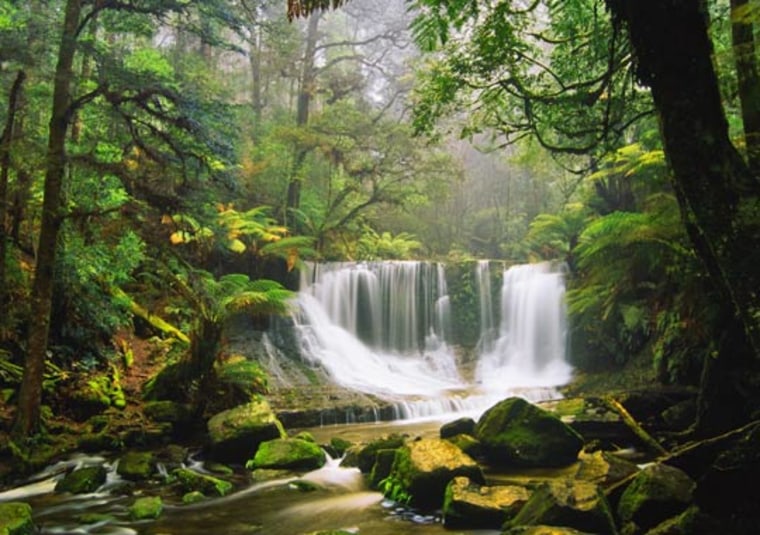One hundred million years ago, the rise of flowering plants altered the course of life on Earth.
They blossomed from humble beginnings into a powerhouse of diversity that created today's rainforests, according to a new study.
The water they pumped into the atmosphere even altered global climate, and continues to today.
From magnolias and oak trees to sage brush and prairie grass, if you look out your window, chances are you're gazing upon a member of the vast angiosperm, or flowering plant, family. There are somewhere between 250,000 and 400,000 described species inhabiting nearly every major ecological niche on land.
The evolution of angiosperms in the humid forests of the Cretaceous period was nothing short of a revolution. As they blossomed among throngs of giant-leafed ferns, their dense clusters of leaf veins allowed them to churn through huge amounts of water, which is then released as vapor, suck up carbon dioxide and grow rapidly.
"Non-angiosperms average about two millimeters of veins per square millimeter of leaf area," Kevin Boyce of the University of Chicago said. "Angiosperms' average is eight to nine."
Panting water into the atmosphere at an unprecedented rate increased humidity. Local rain patterns eventually changed. The plants were making their own weather, crafting the climate into a better growing environment for themselves. This process in turn created the rainforests as we know them today.
Boyce and colleague Jung-Eun Lee investigated the plants' influence on global vegetation in a computer model of global climate. They found that when flowering plants in the Amazon rainforest -- everything from orchids to towering hardwood canopy trees -- were replaced with non-angiosperms, rainfall dropped, temperatures began fluctuating with the seasons, and the forest shrank in size by 80 percent.
Boyce presented the study this week at the Geological Society of America meeting in Portland, Ore.
"Surely there were some small amount of rainforests before angiosperms evolved. In the tropics, there's no way to avoid it," Boyce said. "What angiosperms did was allow that to propagate beyond what you'd expect from physical parameters alone."
For example, the Andes mountains in South America provide rainfall for the western Amazon basin. But the forest wouldn't be able to expand eastward without the humidifying effects of plants themselves.
"They helped create this micro-climate, if you will, that over time helped create the extent and diversity of life in rainforests we see today," Walter Jetz of Yale University said. "It's in many ways a bold claim they're making, but it's a very sound, convincing argument."
The finding has ramifications for the future, too. Flowering plants' evolution marked an inflection point when plants drastically increased their ability to alter climate. As a result, disturbing today's ecosystems could compound the effects of global warming.
